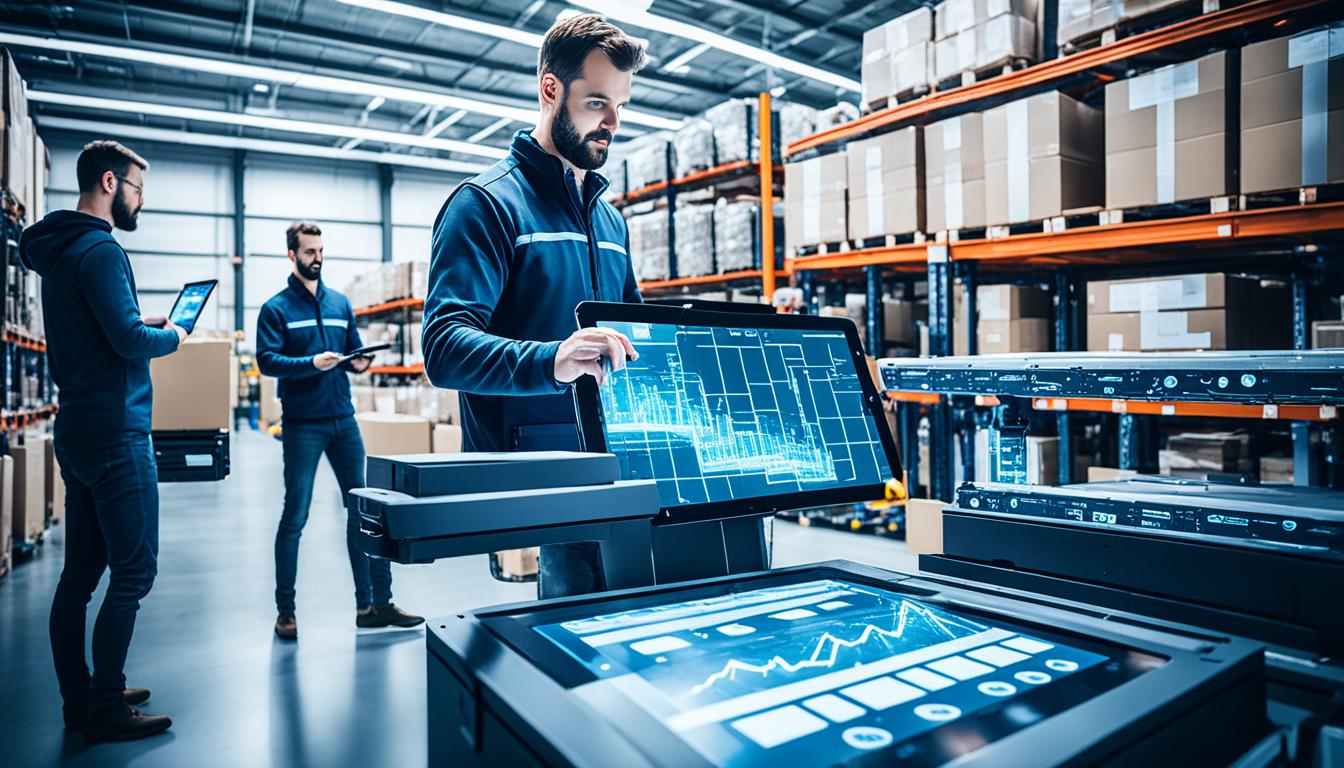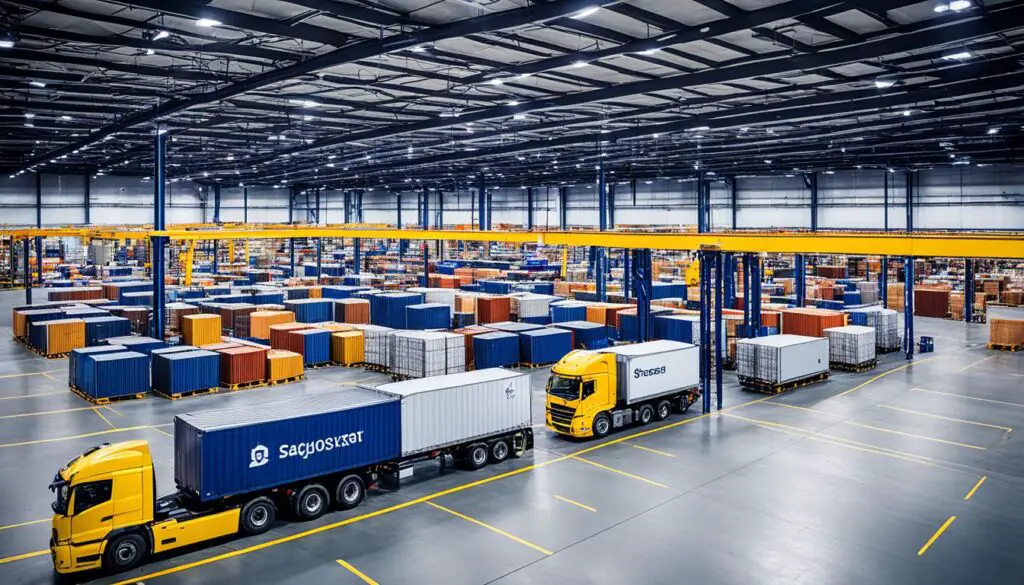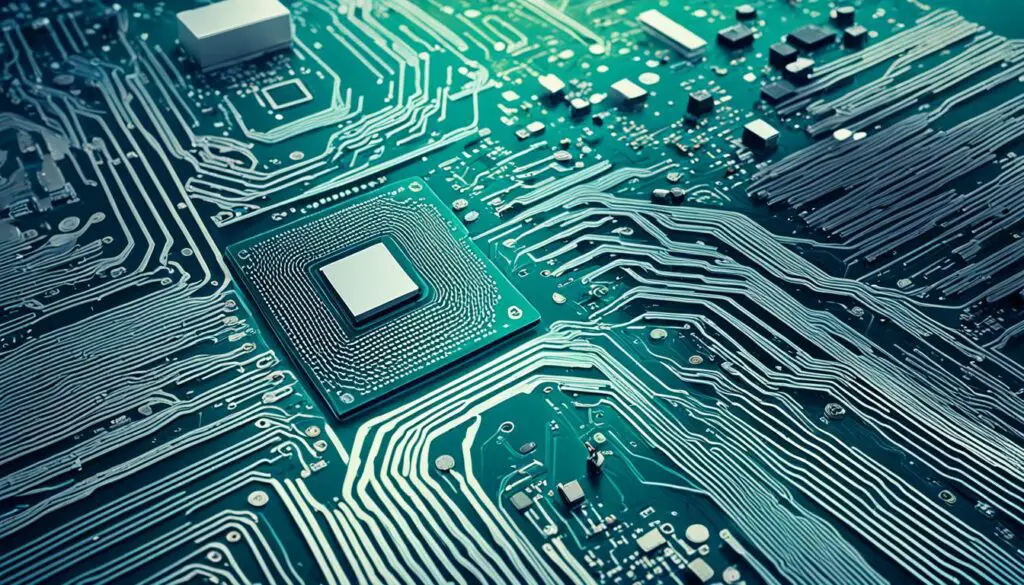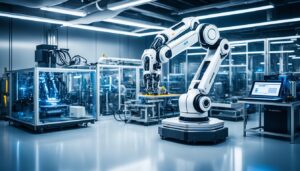
The way we manage supply chains has been transformed completely. AI sensors have made manual tracking a thing of the past. They enable smart data analysis. This changes how businesses track, monitor, and manage goods. Sensor-based logistics let businesses collect real-time data. This is done using many types of sensors like RFID, GPS, and more. These sensors give insights about goods’ movement, condition, and location. This has optimized supply chain operations in a big way.
RFID and GPS sensors are leading the charge in sensor innovation. But, it’s when these are combined with AI and machine learning that their true value shines. This combo boosts smart sensors’ abilities. It offers actionable insights and predicts future trends. The outcomes are many. They include better visibility, more efficient operations, precise inventory management, smoother warehouse operations, and improved customer service.
In this article, I will explore the transformative power of AI sensors and how they are revolutionizing industries through smart data analysis. We’ll discuss how AI and IoT sensors work together beautifully. We’ll also look at how AI and machine learning team up in sensor-based logistics. By the end, the role of AI sensors in reshaping business operations and driving supply chain innovation will be clear.
Key Takeaways:
- AI sensors are revolutionizing industries by enabling smart data analysis in supply chain management.
- Sensor-based logistics involves the use of various sensors to collect real-time data and monitor the movement, condition, and location of goods.
- Integration of AI and ML algorithms enhances the capabilities of smart sensors, providing actionable insights and predictive analytics.
- AI and ML in sensor-based logistics enable businesses to optimize processes, enhance visibility, and streamline operations.
- The partnership between AI and IoT sensors allows for real-time monitoring, predictive analytics, and pattern recognition.
The Power of AI and ML in Sensor-Based Logistics
Sensor-based logistics are changing industries with the help of AI and ML. These technologies analyze vast amounts of data in real-time. They give businesses useful insights and help them make smart decisions ahead of time.
AI and ML make smart sensors even better, leading to more efficient operations. They help businesses use data to improve delivery schedules and forecast demand accurately. This gives companies a clear view of their supply chain.
Using AI and ML helps businesses find the best delivery routes. They analyze past and current data to reduce fuel use and shorten delivery times. Happy customers and more efficient operations are the results.
AI and ML are also great for predicting what customers want. They use reliable sensor data to anticipate demand. This means businesses can keep just the right amount of stock, reducing costs and making sure products are always available.
These technologies also improve how well companies can see into their supply chains. AI uses data from sensors to track goods and make sure they meet quality standards. This helps businesses act fast to fix any problems.
“The collaboration between AI, ML, and sensor-based logistics has the potential to revolutionize industries by enabling businesses to unlock new levels of efficiency, visibility, and performance in their supply chains.”
AI and ML can transform how businesses manage their supply chains. They offer advanced analytics and predictive modeling. This puts companies ahead of their competitors and helps them meet market demands.
When AI and ML join forces with sensor-based logistics, the result is a huge boost in innovation and productivity. They enhance everything from inventory management to transportation. Businesses see better customer service and operational excellence as a result.

The Symbiosis Between IoT Sensors and AI
IoT sensors and AI form a strong team, changing the game for industries. They enable smart data use, analysis, and quick actions. This teamwork is transforming how businesses operate, using data and smart analysis.
IoT sensors gather important data from our world, like temperature and sound. AI then takes over, making sense of this data. It finds patterns and gives predictions.
This powerful connection helps businesses make smart moves quickly, using real-time data. AI’s forecasts help in planning better and reducing risks. With this tech, businesses can see trends early and react fast to new challenges.
Real-Time Decision-Making and Predictive Analytics
Thanks to IoT and AI, companies can act fast and with confidence. The data from IoT sensors gives AI lots to work with. This means businesses can adjust quickly, use resources wisely, and work better.
Predictive analytics is another big win from IoT and AI working together. AI looks at past data and guesses what’s next. This way, companies can get ahead of problems and make their operations smoother.
Identifying Covert Patterns and Driving Innovation
The IoT and AI duo does more than just make things efficient. It finds hidden patterns in data that we might miss. AI is great at spotting these secrets, opening doors to new ideas and shaking up industries.
Let’s look at a few examples of how AI and IoT sensors are creating waves:
- Self-driving cars use AI to stay safe and smart on the roads. They analyze real-time data to avoid dangers, protecting everyone.
- In healthcare, wearable IoT sensors track health stats. AI checks this data for signs of trouble, offering custom health advice.
- For keeping machines running smoothly, IoT sensors watch their condition. AI predicts when they’ll need fixing, saving time and money.
- IoT and AI together make automation even smarter. They adjust processes in real-time, making things work better and faster.
The future of AI and IoT sensors is bright, with endless opportunities for innovation. Their partnership will continue to push the boundaries of what’s possible in monitoring, analysis, and understanding patterns.

Conclusion
AI sensors have truly changed many industries by providing smart, real-time data analyses. They integrate AI, ML, and IoT sensors in supply chain management. This lets businesses optimize processes, improve visibility, and make operations smoother.
There are many benefits to using sensor-based logistics. This technology helps businesses get better visibility and operate more efficiently. It also helps with accurate inventory management, warehouse optimization, and quality control. Plus, it improves customer service and streamlines transportation.
These changes lead to cost savings, better lead times, and stronger business competitiveness. As AI sensors keep getting better, they become more important. They are changing industries and sparking innovation. We will see their impact grow in areas like automotive, healthcare, manufacturing, and retail.
FAQ
What are AI sensors?
How do AI sensors revolutionize industries?
What are the benefits of sensor-based logistics?
What is the role of AI and ML in sensor-based logistics?
How do IoT sensors and AI work together?
Source Links
- https://www.linkedin.com/pulse/sensing-success-game-changing-role-sensor-based-logistics-vela
- https://www.onio.com/article/no-data-no-ai.html
- https://sporttomorrow.com/how-sensors-are-transforming-the-world-of-sports/






